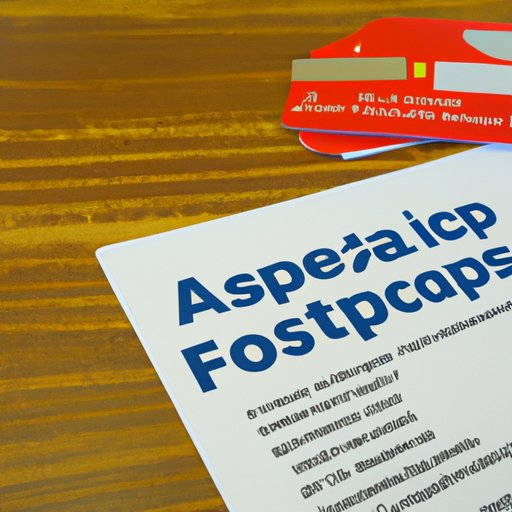
I. Introduction
Food insecurity continues to be a pressing issue in Texas, with many residents lacking access to nutritious meals. Fortunately, there are resources available to help those who may be struggling, such as the Supplemental Nutrition Assistance Program (SNAP), commonly referred to as food stamps. This article is a comprehensive guide to help Texas residents learn how to access these benefits, explore its benefits, and uncover common misconceptions about the assistance program.
II. Step-by-Step Guide
To be eligible for food stamps in Texas, you must meet certain requirements. This includes being a U.S. citizen or a legal permanent resident, having a social security number, and meeting income guidelines. Income requirements vary depending on household size and can be found on the Texas Health and Human Services website. To apply for food stamps, you can either apply online or in person. When applying, you will need to provide documents that verify your identity, income, and expenses. Once you have submitted your application, it will be reviewed, and you will be notified of your eligibility status. It is important to keep in mind that the application process can take up to 30 days to complete.
For a successful application, it is recommended that you use the Texas Health and Human Services website to apply, gather all necessary documents before applying, and follow up with any requests or notifications that may come your way. You can also seek assistance from community organizations for any questions or support during the application process.
III. Exploring the Benefits
Food stamps provide significant monetary assistance to eligible Texas residents and can help alleviate food insecurity. In 2019 alone, over 3 million people in Texas received SNAP benefits, with an average monthly benefit of $126 per person. These benefits can be used to purchase food at local grocery stores and farmers markets, providing recipients with access to healthy and nutritious foods.
According to a report by Feeding Texas, SNAP has a significant impact on food security, particularly for families with children. The report found that SNAP benefits reduced the severity of food insecurity by 39% among families with children.
IV. Common Misconceptions
There are many misconceptions surrounding food stamps, which can impact an individual’s decision to apply. One common misconception is that SNAP benefits are only available to those who are unemployed. In reality, recipients can be employed and still qualify for benefits, as long as their income falls below the program’s guidelines.
Another misconception is that there is stigma associated with receiving food stamps. However, the USDA has noted that a majority of Americans who support SNAP agree that the program is important for individuals and families in need.
V. Interviews with Recipients
First-hand accounts from recipients provide valuable insights into the application process and the impact it has on their daily lives. One recipient shared that receiving food stamps helped put healthy food on the table for her and her family. Without SNAP, she would not be able to afford fresh fruits and vegetables or have enough food to last the entire month. Another recipient shared that initially, she was nervous about applying for food stamps due to the stigma associated with it. However, after receiving the benefits, she realized the program was a helpful resource during a time of need.
VI. How the Application Process has Changed Over Time
The process of applying for food stamps has undergone significant changes in Texas over the years. In 2016, the state implemented an online application system to make it easier for residents to apply for benefits. In addition to online applications, recipients can also access their benefits through the Lone Star Card, a debit-like card that can be used at participating stores.
VII. Exploring Alternative Programs
In addition to food stamps, Texas also offers alternative programs to assist individuals and families in need. SNAP education provides recipients with resources and classes on healthy eating habits, meal planning, and budgeting. The Texas Health and Human Services also offers job training and education programs to help Texans get back on their feet and earn a living wage.
VIII. Tips for a Successful Application
To increase your chances of a successful application, it is important to gather all necessary documents before applying and to use the online application system on the Texas Health and Human Services website. It is also recommended to follow up on any requests or notifications from the agency and seek assistance from community organizations as needed.
If your application is rejected, it is important to review the decision and consider appealing if you disagree with the outcome. This process can take time, but it can lead to a successful application and access to the benefits you need to improve your food security.
IX. Conclusion
Food insecurity is a pressing issue in Texas, but with the help of food stamps and other assistance programs, residents can access the help they need to put nutritious meals on the table. The application process may seem daunting at first, but with the help of this comprehensive guide, applicants can have a greater chance of success. It is important to take advantage of these resources and encourage others who may be in need to apply as well.





